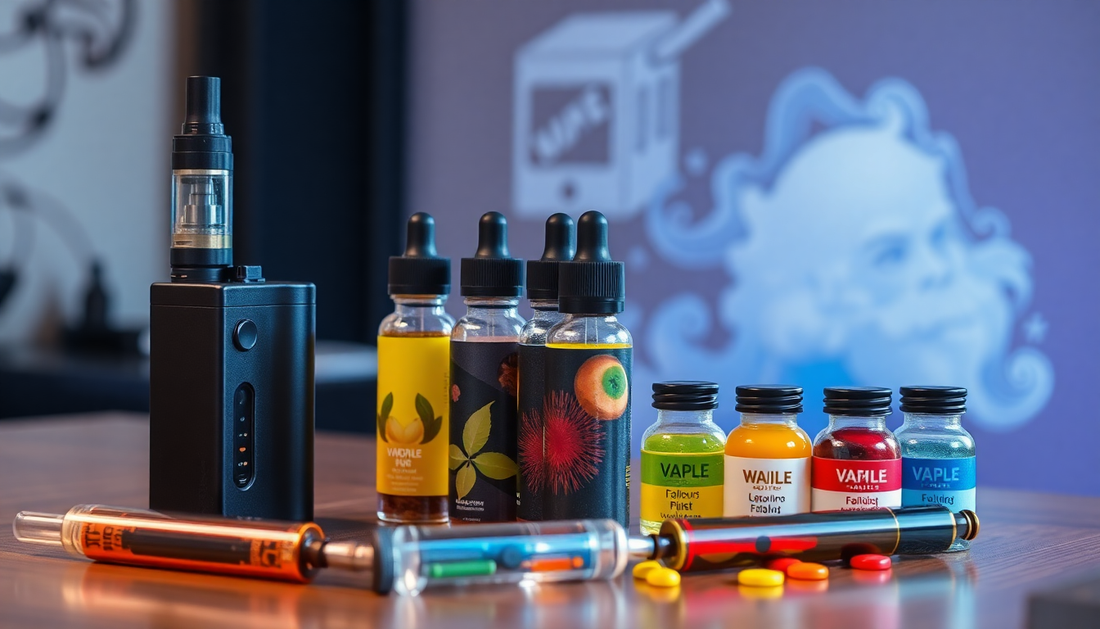
The Fascinating Vape Mice Experiment: Insights into Vaping Behavior and Preferences
Introduction
Vaping has emerged as a significant cultural and health phenomenon in recent years, garnering attention from researchers, health officials, and the public alike. This rise in popularity leads to vital questions regarding the motivations behind vaping and the preferences of users. One of the most intriguing studies in this realm is the Vape Mice Experiment, which delves deep into the behavioral patterns associated with vaping. Through the examination of mice as a model for human behavior, researchers have uncovered essential insights that can illuminate the vaping landscape.
Understanding the Vape Mice Experiment
The Vape Mice Experiment was meticulously designed to explore various aspects of vaping behavior, particularly focusing on how different factors influence preferences and habits. By utilizing mice in a controlled environment, researchers aimed to replicate the conditions under which humans might engage in vaping. This methodology allowed for a closer look at the physiological and psychological responses to vaping stimuli.
Methodology of the Experiment
The experiment involved several stages to ensure a comprehensive analysis of vaping behavior:
- Selection of Subjects: A diverse group of mice was selected to encompass a range of genetic backgrounds, mimicking the diversity found in human populations.
- Vaping Apparatus: Researchers created a specialized vaping device that could deliver various e-liquid flavors and nicotine concentrations to the mice.
- Behavioral Observation: Mice were observed in both solitary and social settings to assess how their vaping behavior changed based on environmental influences.
- Data Collection: Researchers meticulously recorded data on the frequency and duration of vaping, as well as preferences for different flavors and nicotine levels.
Key Findings from the Experiment
The Vape Mice Experiment yielded several fascinating findings, each contributing to our understanding of vaping behavior:
- Preference for Flavor: Mice exhibited a pronounced preference for flavored vaping products. The study showed that sweet and fruity flavors significantly attracted them, indicating that flavor could be a crucial factor drawing individuals to vape.
- Nicotine Levels: Mice responded differently to various nicotine concentrations. Some showed a clear preference for moderate nicotine levels, suggesting that individuals might seek a balance between satisfaction and health risks.
- Social Influences: The experiment highlighted the impact of social interactions on vaping behavior. Mice that observed their peers engaging in vaping were more likely to partake in the activity themselves, suggesting that peer influence plays a vital role in initiating vaping habits.
- Stress Response: Researchers found that stressed mice were significantly more inclined to engage in vaping. This finding underscores the potential for vaping as a coping mechanism for stress and anxiety.
- Habituation: Over time, mice displayed a tendency to habituate to vaping, indicating that initial excitement could wane, leading to potential changes in behavior and preferences.
Implications for Human Vaping Behavior
The findings from the Vape Mice Experiment carry critical implications for understanding human vaping behavior:
- Flavor Innovation: The clear preference for flavored products suggests that vape manufacturers should continue to innovate and diversify their flavor offerings. This can attract new users and retain existing ones.
- Targeted Marketing: Understanding the social influences on vaping can help marketers develop targeted campaigns that resonate with specific demographics, enhancing engagement and brand loyalty.
- Health Considerations: The relationship between stress and vaping behavior indicates a need for supportive measures, such as counseling or alternative stress-relief strategies, for individuals who may rely on vaping as a coping mechanism.
- Public Health Messaging: These insights can inform public health campaigns aimed at educating potential vapers about the risks associated with vaping, particularly focusing on the appeal of flavors and the social aspects that may encourage usage.
- Further Research: The experiment opens new avenues for future research into vaping behaviors, particularly regarding how different demographic factors may influence preferences and habits.
Comparative Analysis with Traditional Smoking
While vaping is often marketed as a safer alternative to traditional smoking, it is essential to compare behaviors associated with both. The Vape Mice Experiment also provided insights that can be juxtaposed with smoking behaviors:
- Flavor Preference: Similar to vaping, smokers often have preferences for flavored tobacco products. Understanding this can help in devising strategies to transition smokers to vaping products.
- Social Influences: Just as social settings can encourage vaping, they also play a significant role in smoking initiation. This highlights the need for targeted interventions in social contexts.
- Health Risks: While vaping is generally perceived as less harmful than smoking, both behaviors pose health risks. The study's findings concerning stress and coping mechanisms can inform how both vapers and smokers might seek alternatives to manage their stress.
Conclusion
The Vape Mice Experiment provides a compelling look into the complexities of vaping behavior and preferences. By studying the preferences of mice, researchers have gained valuable insights that can be applied to understand human behavior better. As the vaping landscape continues to evolve, understanding these preferences and the underlying motivations can help guide manufacturers, marketers, and health professionals in addressing the needs and concerns of vapers. Additionally, as vaping becomes more prevalent, ongoing research will be crucial in navigating the implications for public health and personal well-being.
Call to Action
As we continue to explore the fascinating world of vaping, it is essential for users, manufacturers, and policymakers to stay informed about the latest research and trends. Join the conversation about vaping behavior and preferences, and consider how insights from studies like the Vape Mice Experiment can shape a healthier vaping culture.









